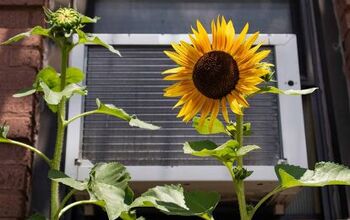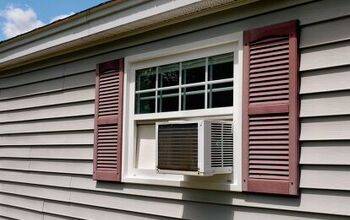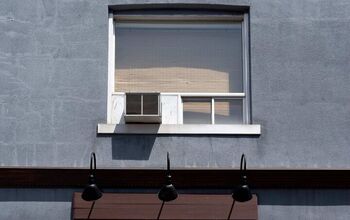Can You Plug An Air Conditioner Into A Surge Protector?

Power surges happen without warning, and they can damage every electrical appliance within your home, including AC units. When power surges occur, there is usually a blackout lasting several minutes to hours. As soon as the power is restored, you may find some electrical appliances have been short-circuited, burned, or overcharged.
The question arises concerning AC units and how to protect them from power surges. For many electronics, there are power surge protectors that keep them safe from burning out. But can you plug an air conditioner into a surge protector?
You can plug an air conditioner into a surge protector, and it is the safest option. It is unsafe to plug an air conditioner into a standard power strip, however. Make sure that the surge protector is compatible with the volts and amps of your air conditioner.
How a Surge Protector for an AC Works
All electronic devices and appliances have a power draw system. Each item has a minimum current that is required for the unit to function correctly. Every draw is rated, and the demand is critical for the exact amount of power to be used.
Anything over the amount required causes a surge in the power system, cutting off the breakers. Sometimes the power will get shut down from the primary grid at the central location. Whatever is plugged into a surge protector will be safe from being overloaded.
The surge protector will shut off the power from the plug-in connection to avoid damage to the units plugged in. It acts as a cut-off point from the outlet to the unit. The surge protector will take the hit and flip the switch off automatically.
Why Invest in a Surge Protector?
Whether window units, central units, or portable units, air conditioners are expensive. On the hot and scolding days of summer, temperatures in the attic can reach 140 degrees and higher. That heat is drawn down into the living quarters, where it can get uncomfortable without an air conditioner.
You want to keep your AC unit running for as long as possible without cutting the lifespan short. It is much cheaper to invest in a surge protector for your AC than to buy a new AC. Having a surge protector for your AC is like an insurance policy to keep the unit safe.
An AC unit takes a massive amount of juice to operate, and more so when it kicks on. It can trip breakers on its own when starting up or running all day. Having one of the most luxurious appliances in our homes safe from damage should be a priority.
The Warranties With Surge Protection
It is known that warranties have been voided when power surges have damaged the unit. The homeowner is responsible for keeping up with the maintenance, and power surge protection falls under that category. It leaves only options of repair or purchase a new one, and both are expensive.
To keep things safe, having surge protection for your AC is the wisest decision. If a power surge occurs and the AC burns out with a faulty power surge protector, both will be replaced. The warranty will honor the fact the homeowner tried to maintain and spare the AC unit.
What to Look for in Choosing an AC Surge Protector
Buying a surge protector is not something you can walk into a store and purchase. It takes research with knowing all of the factors. Purchasing the wrong type of AC surge protector can damage the unit.
These are the factors that must be taken into consideration when purchasing an AC surge protector.
1. Protection Modes
There are three different modes for protection known by initials, LN, LG, and NG. The Line to Neutral or LN bypasses the ground wire as it sends the overflowing current through the neutral wire. The Line to Ground or LG pulls the surge to the ground wire as it feeds the protector.
The Neutral to Ground or NG sends any spikes or surges from the neutral wire to the ground line. Each of these three modes should be featured in the surge protector you purchase.
2. Max Surge Current Capacity (MSCC)
MSCC is measured in Kiloampere and is the number of spikes in power a unit can handle. The more an MSCC, the stronger the surge protector can hold. Keep in mind; nothing can take a direct hit from a lightning strike.
Lightning holds a voltage that is way off the charts. It is a force of Mother Nature; no man-made device can protect anything from in its fury. Any power surges from electricity and the power plants, the surge protector you buy needs to handle it.
3. Short Circuit Current Rating (SCCR)
Short circuits cause different problems compared to regular surges. SCCR has a separate rating system. It measures how much energy a unit can withstand before short circuits occur.
4. Max Continuous Operating Voltage (MCOV)
Measuring the line voltage of LL, or LN, the rating needs to be higher than what is demanded. There should only be a minimum rating of 115 to 120 percent. For most installations, any number between those two percents is a perfect number.
5. MOV’s Number, Size, and Quality
Metal Oxide Varistors or MOV are tiny devices inside the surge protector that breaks when a power surge hits. Whole house protectors are created to handle more than one surge per MOV. Single surge protectors can only take one hit.
The higher the MOVs, the better protection you will have against power surges.
6. NEMA Enclosure Type
The National Electrical Manufacturer Association or NEMA is a location rating to see if the device can get installed in a specific area. The factors are determined by the weatherproofing and voltage ratings. An example is residential means the device can only get installed in homes.
The same ideas apply for outdoors, indoors, restricted, public, or commercial areas. Only the power companies can install whole house surge suppression. You should still know the ratings along with the NEMA enclosure types that are used.
7. Absorption Rating
The absorption rating is measured in joules and is the measure of energy. It is what is being used by the unit before failing. If a surge protector has a high amount of joules, it is guaranteed more protection.
The lower the amount of absorption rating, the better off the product is. When shopping for a power surge protector, look for the low absorption rate and the high joule count.
8. UL Rating
The Underwriters Laboratories organization has criteria that all electrical equipment has to meet. The list is UL 1449 for surge protectors and suppressors, and it must meet the lowest allowed outlined by the UL.
Upon passing, each electrical device has a rating sticker placed on the product and its packaging.
9. Price and Warranty
The price and warranty are something to look for on any and every electronic device. Prices will fluctuate with the order of supply and demand. For the most part, the average costs are between $17 and $200.
It depends on the size of the unit and if it is 220V or 110V. The plugs are different on each as the 220 has one prong turned sideways.
The warranties may vary between stores. Some stores have a warranty for all electronic devices for up to 6 months, depending on the size and price. Others may have a 60 to 90-day warranty.
The manufacturers will give a better deal on the warranty. The only difference is, you will have to pay to send it off. Warranties from the manufacturers last from six months to a year.
Portable AC and Surge Protectors
Portable air conditioners and some of the latest model window units, you may not need a surge protector because it already has one built-in. Like all AC units, if you need to buy a surge protector, be sure to purchase a compatible one. It must be able to handle the load.
The Circuit Breaker
The circuit breaker is another device that can save the life of an air conditioner when a power surge hits. When the power surge strikes, the breaker box will receive the first warning signs. It will then trip the breaker and cut the power to the AC before any harm is done.
More Related Guides

We are a team of passionate homeowners, home improvement pros, and DIY enthusiasts who enjoy sharing home improvement, housekeeping, decorating, and more with other homeowners! Whether you're looking for a step-by-step guide on fixing an appliance or the cost of installing a fence, we've here to help.
More by Upgraded Home Team














![10 Best Electric Pressure Washers – [2022 Reviews & Guide]](https://cdn-fastly.upgradedhome.com/media/2023/07/31/9070600/10-best-electric-pressure-washers-2022-reviews-guide.jpg?size=350x220)












